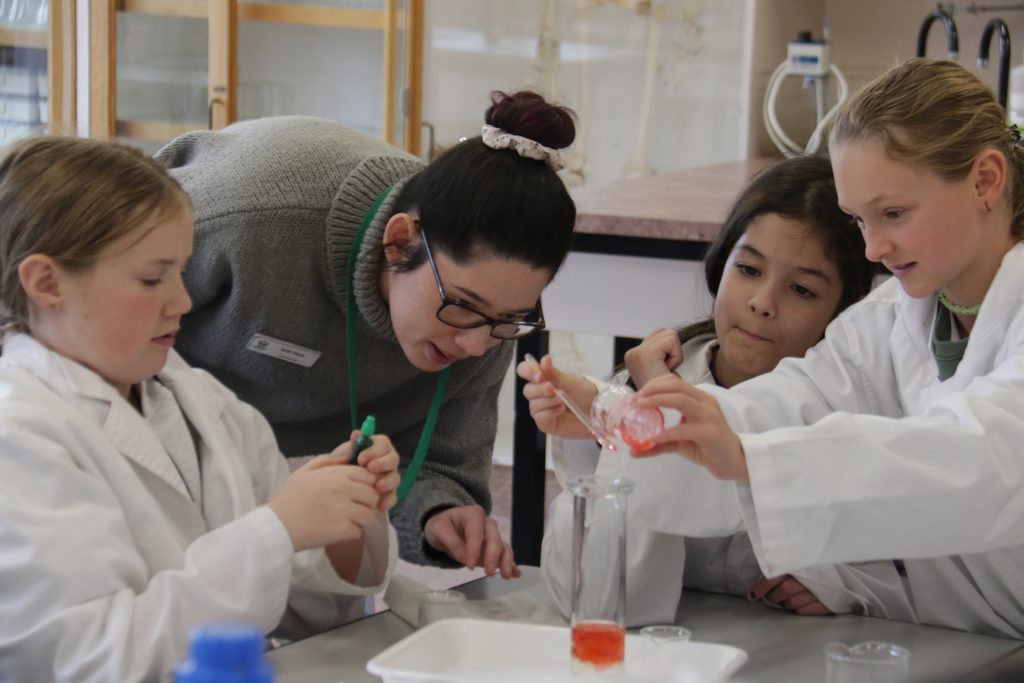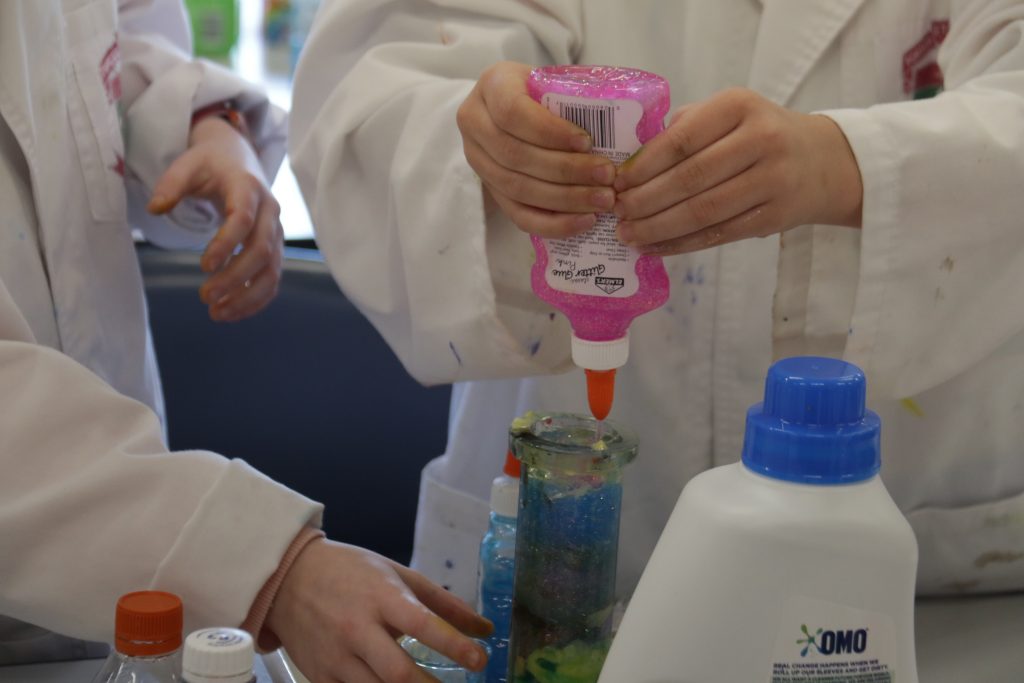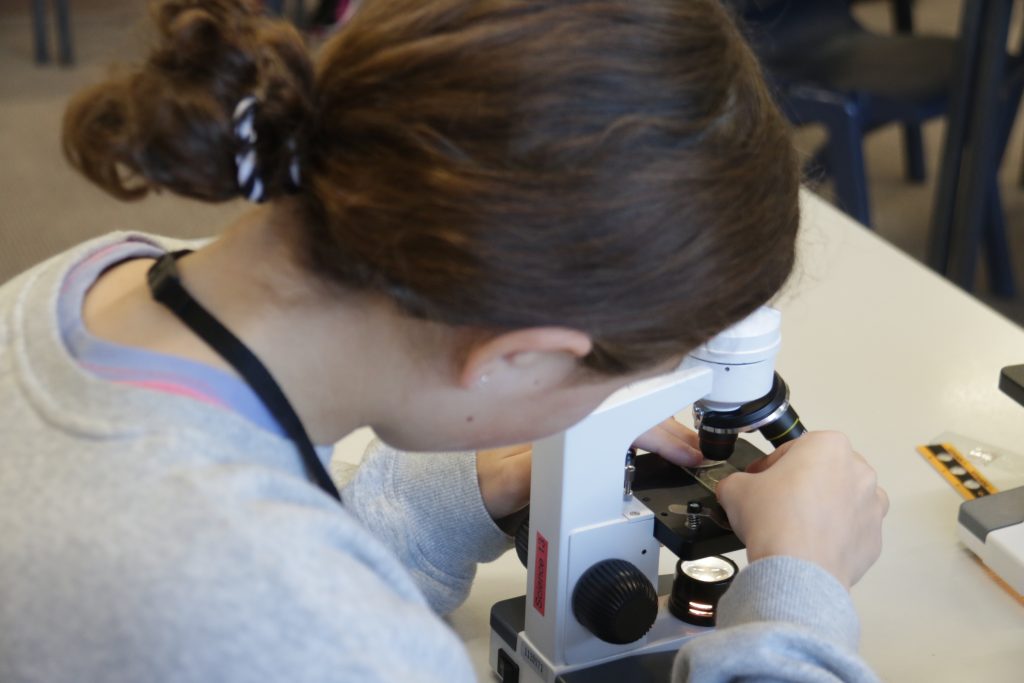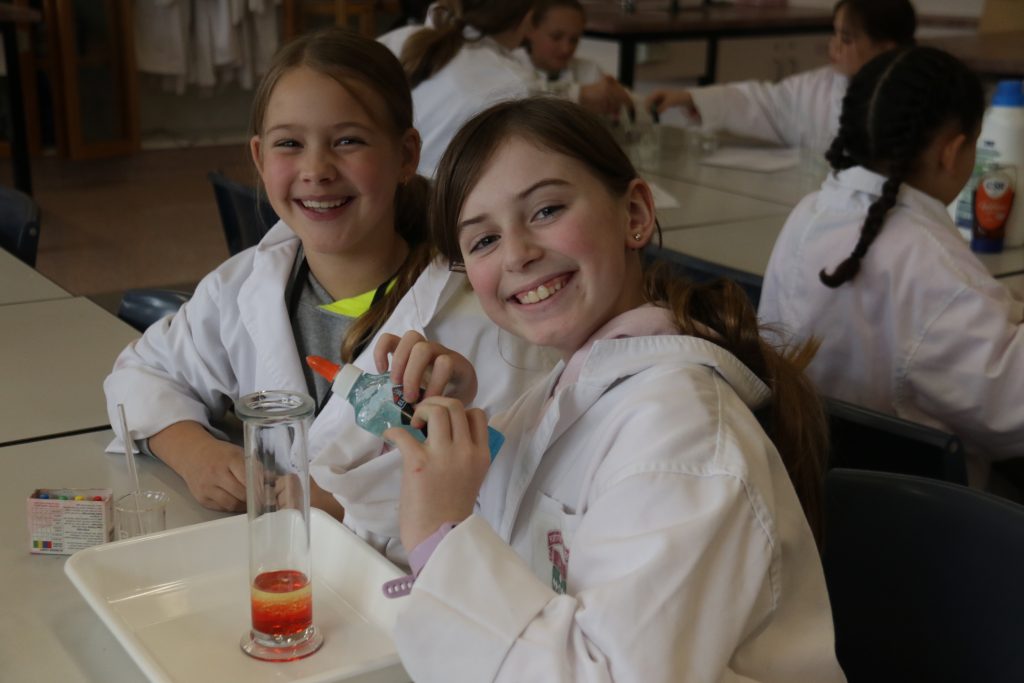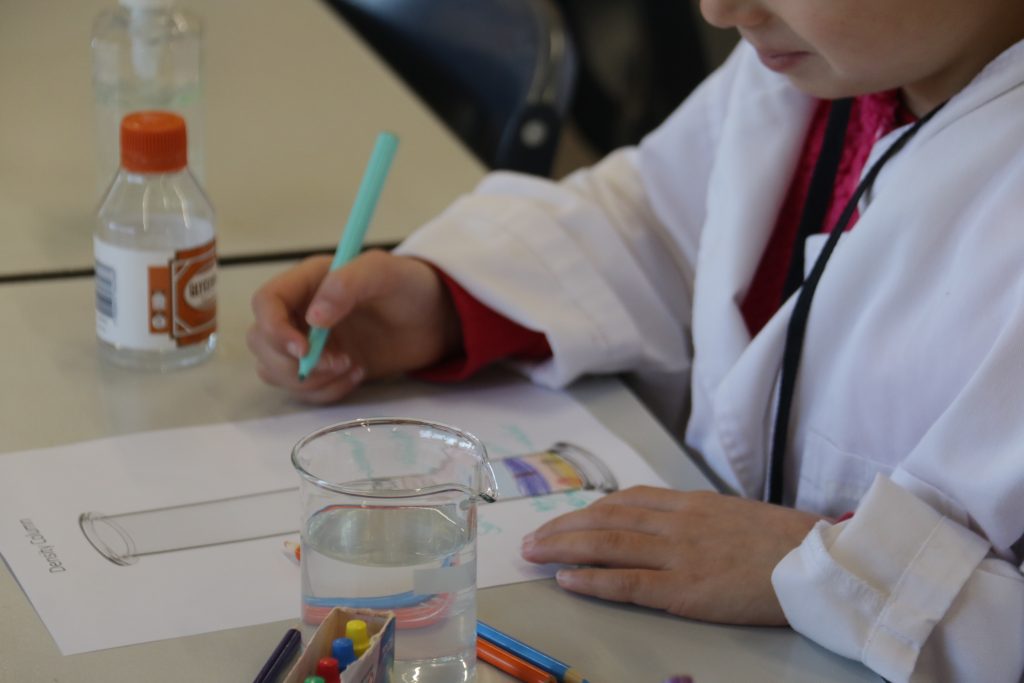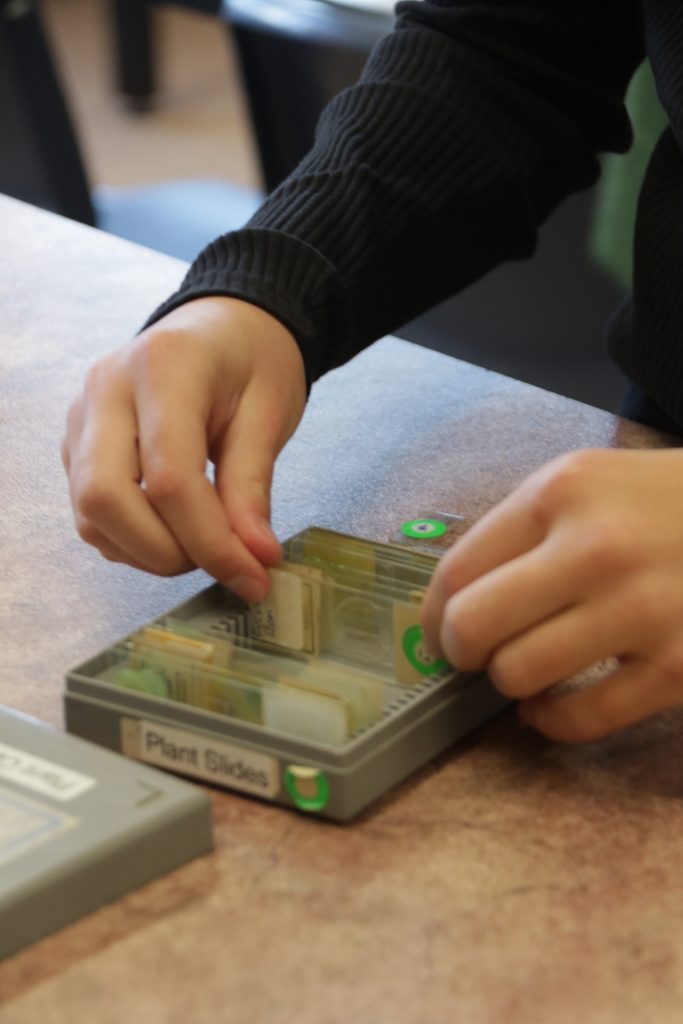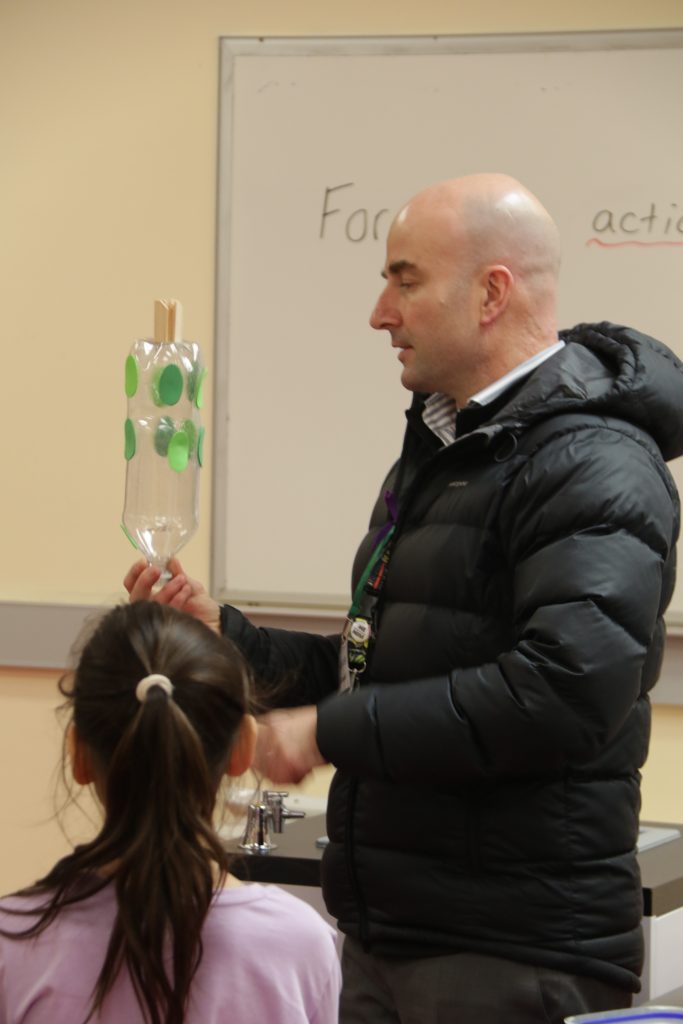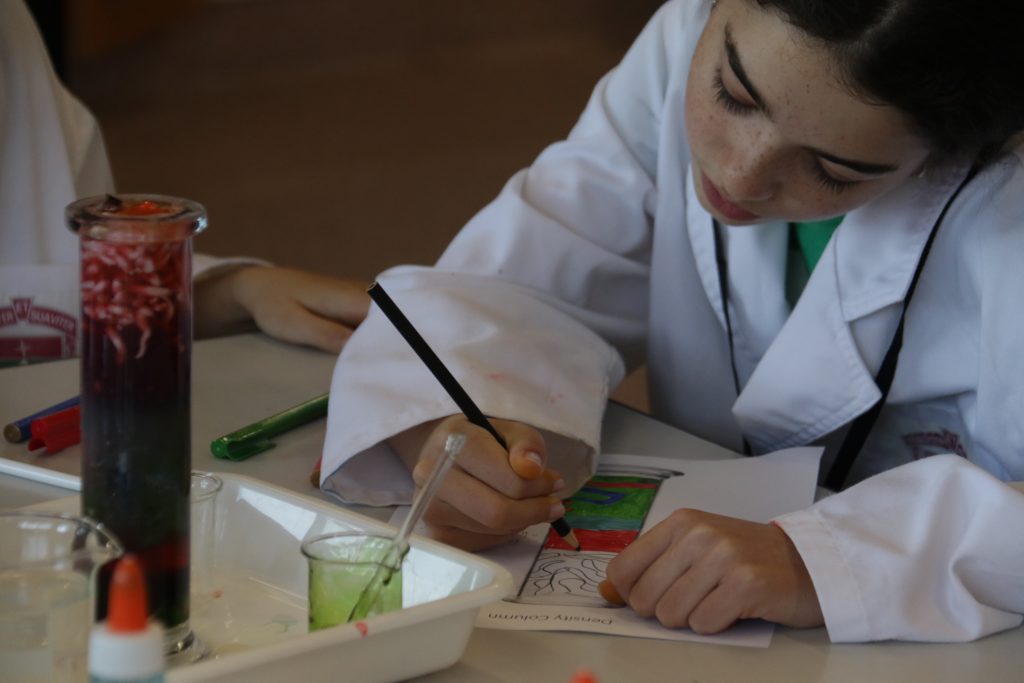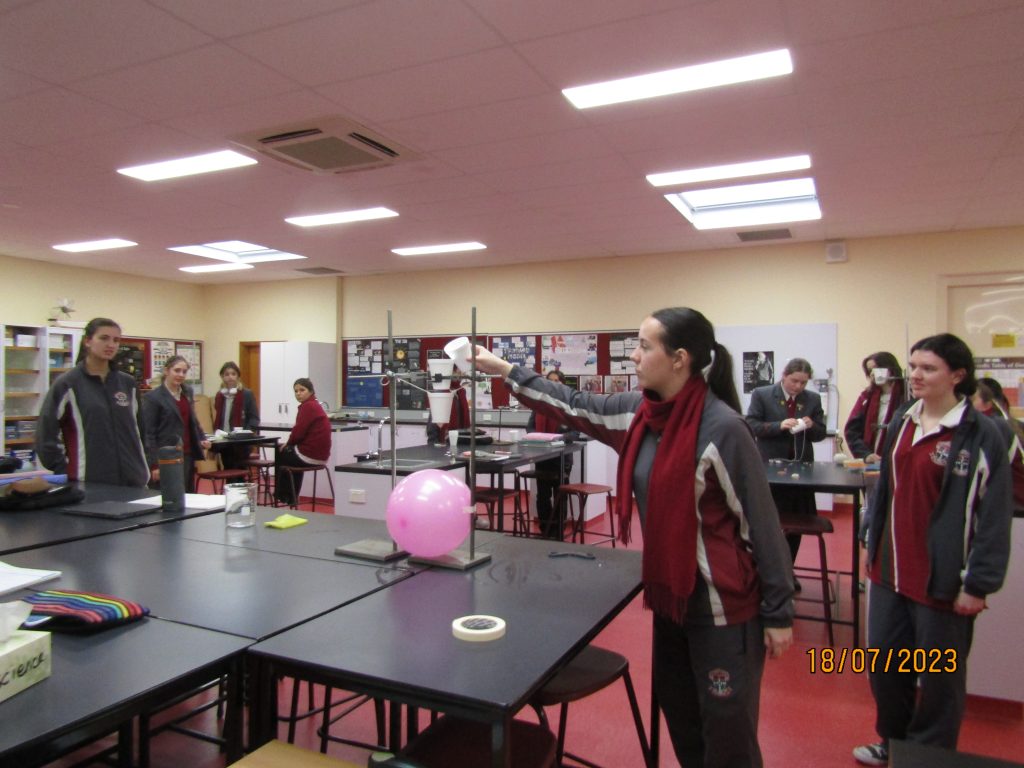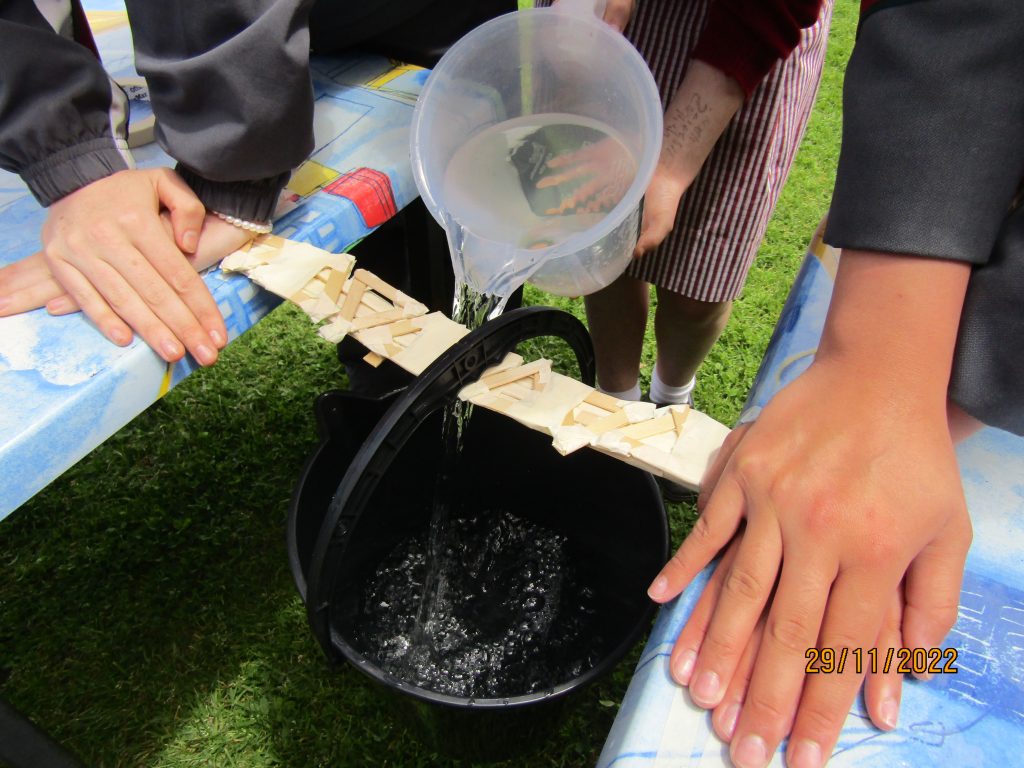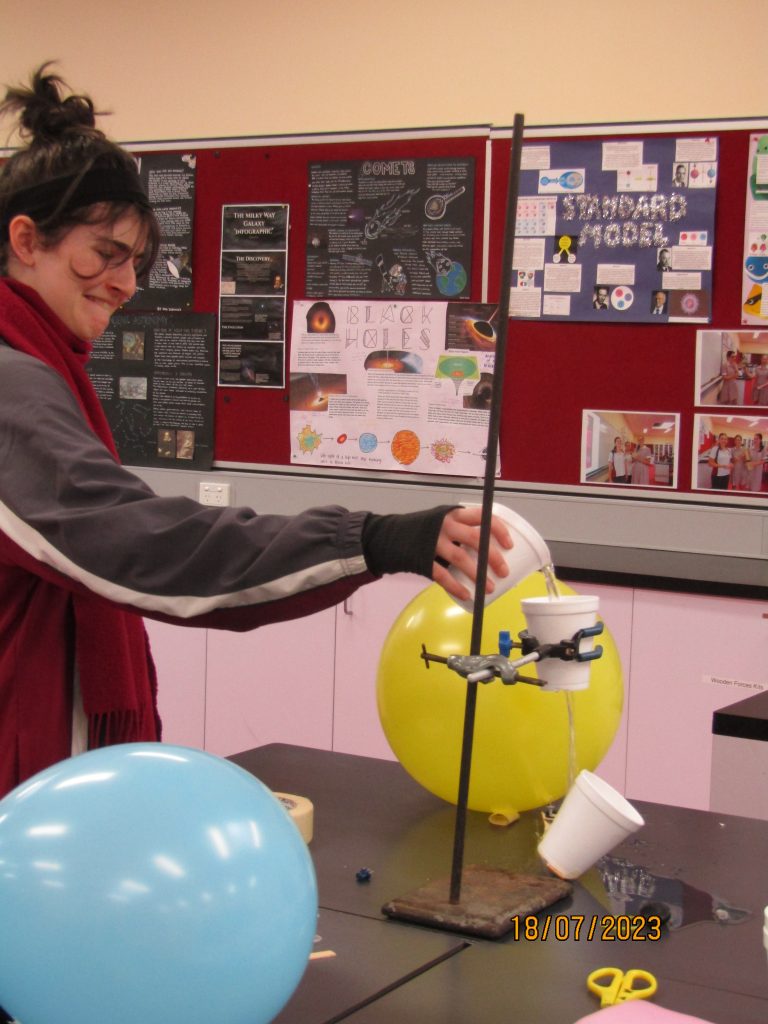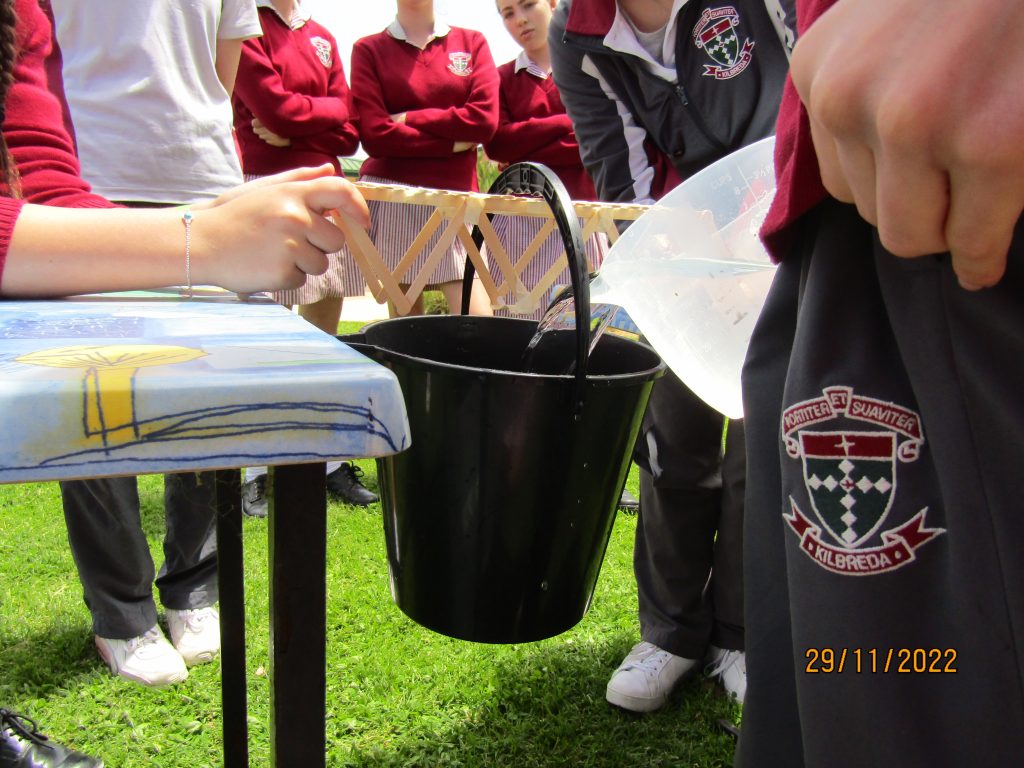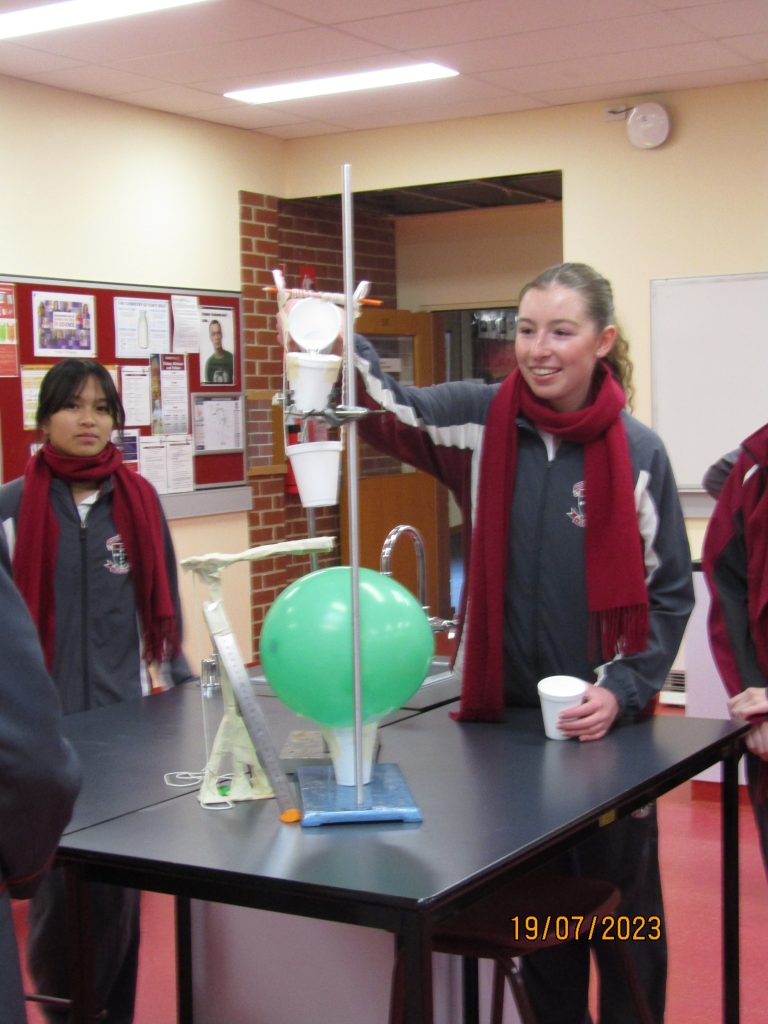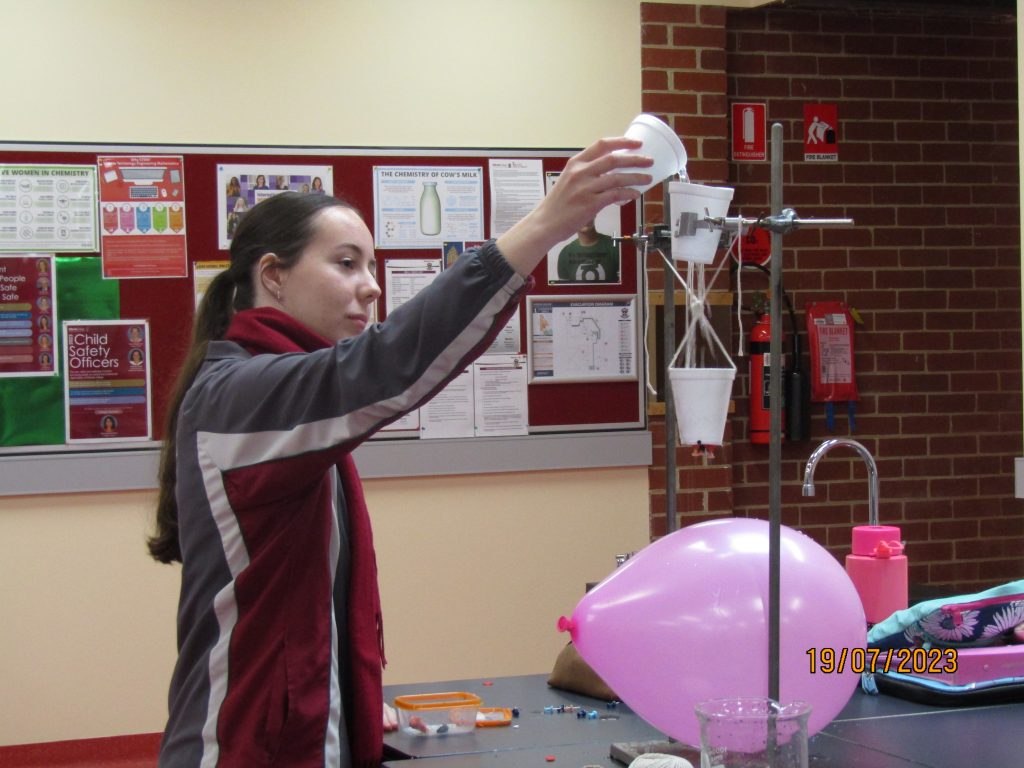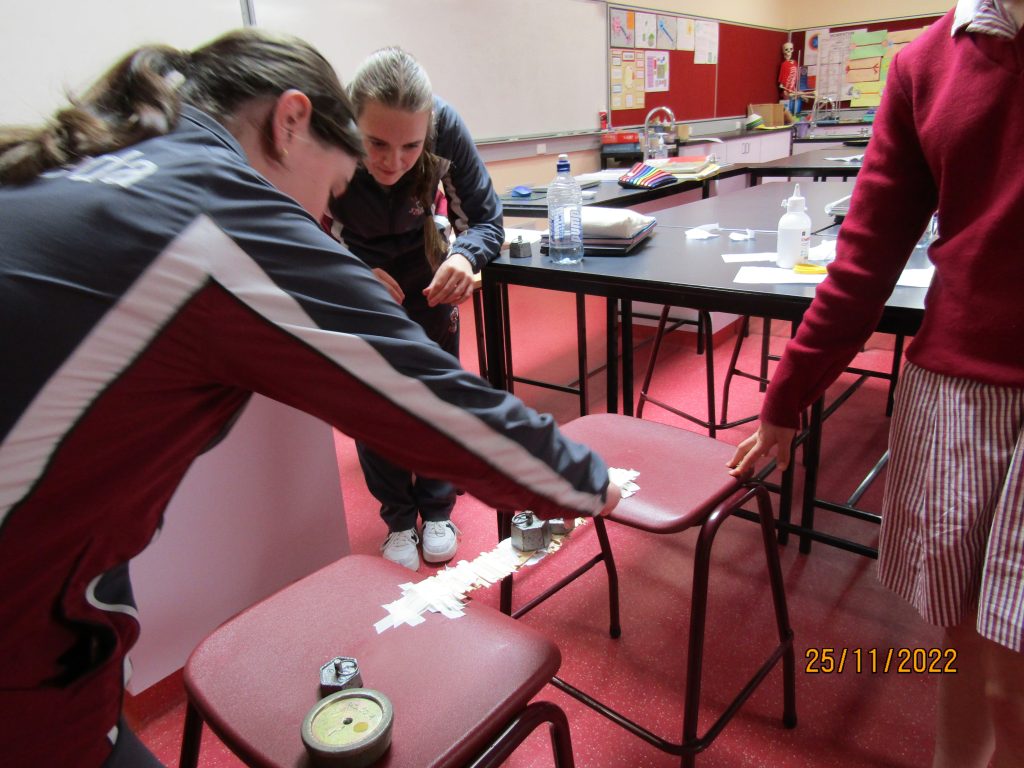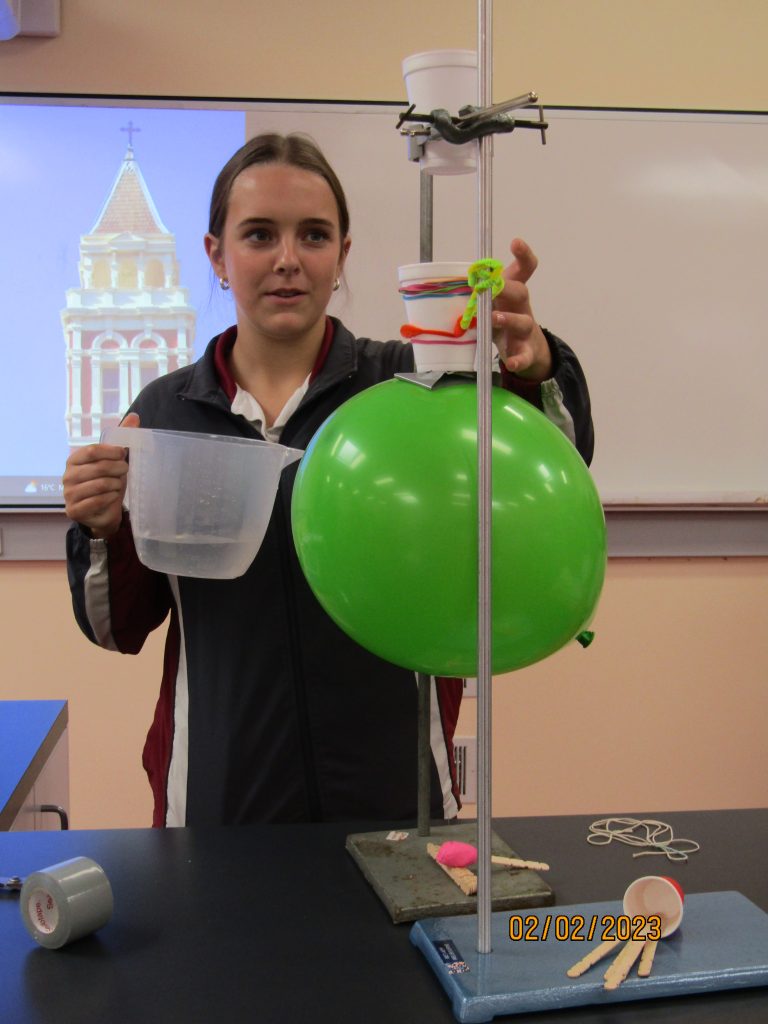Science
SPARK School Holiday Program
On Friday 7 July, in the recent school holiday period, Sarah Avitabile, Sarah Chuck and Simon Gurowski welcomed local primary school students into the labs here at the College as part of the the SPARK holiday program. The miniature scientists had the opportunity to design and launch bottle rockets (which worked a little too well!), explore life under a microscope and investigate the properties of different liquids by making a density column.
The Big Science Competition
Thank you to everyone who participated in the Big Science Competition this year. The results are in!
We congratulate Celeste Healy (Year 7) and Sofia Gracias (Year 8) who achieved a Distinction and Kara Gurung (Year 7) and Pratima Thomas (Year 8) who received a High Distinction. Amazing effort!


National Science Week
National Science Week is Australia’s annual celebration of Science and Technology. This year, Science Week occurs between 12 to 20 August and the theme is Innovation: Powering Future Industries. Kilbreda will be celebrating Science Week in Week 9 this term. Here are some ways you can get involved in August.
Science is Better than Fiction
An evening of scientific wonder as Swinburne’s Astronomers and Science Communicators provide you with a captivating glimpse into life within STEM fields. They’ll break down the science they perform daily and share their insights on what they believe will be the next big thing in Physics and Astronomy.
Costume competition – Science really is better than fiction, celebrate it with us in style by dressing up as your favourite sci-fi character or pay homage to a real-life scientist. Prizes will be announced.
The panel of experts:
- Professor Virginia Kilborn, Swinburne’s Chief Scientist
- Dr Rebecca Allen, Co-Director, Space Technology and Industry Institute
- Dr Sara Webb, Astrophysicist and Space Challenge Mission Director
- Simon Goode, Astrophysicist and Machine Learning Enthusiast
- Lisa Horsley, Science Communicator
When: Monday 14 August
6.00pm to 7.00pm
Where: Swinburne University of Technology
Crystal-A-Con
As part of the International Union of Crystallography conference coming to Melbourne in August, there will be a free interactive educational event (Crystal-A-Con) for kids, particularly those aged 9 to14.
It’s all about crystals – their properties, patterns and structures. There will be fun interactive activities, and kids will get a passport to collect stamps at each of the activity stations. Help make a giant diamond, talk to real life crystallographers from all around the world, and build your own patterns and molecules.
When: Friday 25 August to Saturday 26 August
8:30am to 12:30pm
Where: Melbourne Convention and Exhibition Centre
National Science Quiz
Join host Charlie Pickering and special guest team captains Nate Byrne – ABC News Breakfast (ABC TV) and Simon Pampena – Catalyst (ABC TV) / Outrageous Acts of Science (Discovery Channel) for a celebration of science. Watch as our two teams battle it out to be this year’s National Science Quiz 2023 champions. The winning team will leave victorious and the losing team will be slimed live-on-stage!
You can also play along with the quiz as an individual or team to win great prizes!
When: Sunday 27 August
3:30pm to 5:00pm
Where: The Capitol, Melbourne + Livestreamed Online
If none of the above events spark your interest, you can find many more below:
Around the Labs…
Speeding Through Space
This year, the traditional core Year 10 Science course was split into two electives: Speeding Through Space and Evolving Life and Matter.
Evolving Life and Matter contains the Biology and Chemistry content that prepares students for these subjects in VCE. Speeding Through Space contains Physics content.
In addition to these electives, students can also select the long-standing and very popular elective of Medical Science. This consists of a contextual approach to Science through medical applications and also contains Psychology content. Students select a minimum of two electives and as a result can tailor their science study at Year 10 to suit their pathways.
Feedback from Semester 1 was very positive from students across all three of the electives.
Here are a sample of responses from the students surveyed at the end of semester about their study of Speeding Through Space.
“It’s really fun, the engineering is the best part and has more hands-on learning, while the other topics are more academic. It’s a lot different than most Sciences that you would have experienced but that’s what makes it really fun.”
“Speeding Through Space is about engineering, motion, Newton’s Laws, the universe and stars. If you enjoy Physics and want to do the subject in VCE, this is the elective for you!”
“As we had a lot of opportunities to try different hands-on learning, it allowed us to really get an understanding of what it means to be an engineer”.
“Working on these tasks allowed us to get a better understanding and idea of what it is like to work as engineers in groups and allowed us to display our hard work in a real model. This made me really proud of what we had achieved.”
In addition to the Physics-based topics of motion and space, students in this elective participate in a four week unit called “Engineering Solutions”. The field of engineering impacts everything we use each day; from appliances in our homes, digital communication and technology, the transport we use to travel and the buildings and structures we spend our days inside. Students spend time working in teams to solve real problems, such as building the strongest bridge with a set amount of materials or creating a device that will burst a balloon from the action of pouring water into a cup.
The two classes to take on this challenge so far this year have shown ingenuity in devising a variety of ways to solve these problems. They have developed their skills in collaboration and have needed to persist, often refining a technique up to 20 times before experiencing success!
One of our current students, Charlotte Maclean, shares her reflection.
Student Reflection
In Speeding Through Space we had a wonderful time working together in creating solutions to different problems based on many real life scenarios. We were faced with a problem we needed to solve, a set of parameters, a list of limited materials and a randomised group. From that, we had to work together in our groups to come up with an innovative solution to overcome the obstacle and build an original and creative design that was functional!
We began with building prototype bridges in response to a situation, where in this case was a real life example of an earthquake in Nepal. With only 40 icy pole sticks and some PVA glue (which turned out to be surprisingly strong), we set to work. Personally, our group’s design may not have been the best! Too much decoration and not nearly enough stability or strength! To my great embarrassment, I must admit, our bridge crumbled under a mere four kilograms, making it the weakest bridge in the class!
Next we worked on building a device that we would be able to trigger so it could pop a balloon without our support minutes after we had left it. This project was based on a withdrawal tactic from WW1 in Gallipoli, where Australian soldiers worked to build a device that fired rifles long after they had withdrawn.
We were given Styrofoam cups, water, tape, string, icy pole sticks, plasticine and pins. After our bridge failure, our group was anxious to redeem ourselves and the ideas were very much flowing. We brainstormed and debated until we were left with a general idea of how we were going to set about creating a solution. We split our group into two so we could work more effectively on two different structures that would ultimately fit together.
One half of our group worked on creating a device of pencil, string and styrofoam rings that would slowly lower a cup when filled with water. This cup of water would then lower on to the secondary device – a glorified seesaw made 95% of masking tape that looked very much like a diving board. Pins were studded into the bottom of this structure’s platform, and as the cup lowered, the platform would lower with the weight of the water. Until finally, the balloon popped from the pins!
Of course, we did not reach this solution immediately, in fact it took fail after fail to improve and perfect the structure. At first, the water did not fall fast enough, then there were not enough pins, then the diving board structure kept completely missing the balloon. It took a lot of frustration, new ideas, spilt water and modifications before we were able to get a successful outcome. After so much defeat, we were so eager to hear that balloon ‘POP’.
Charlotte Maclean
Year 10
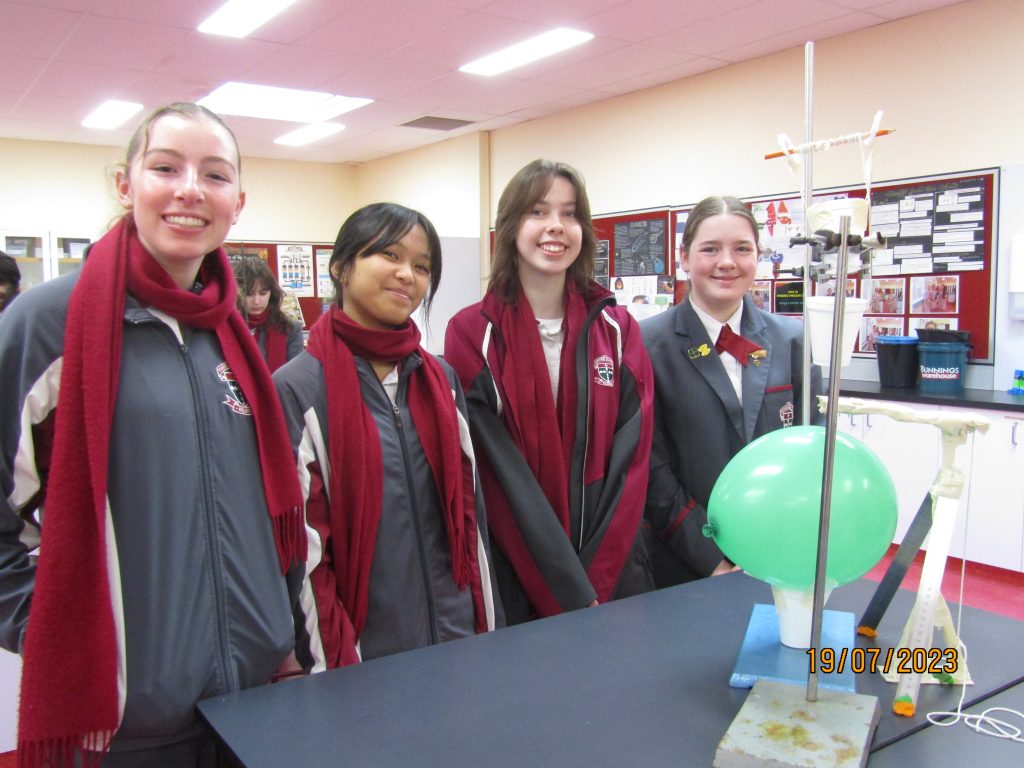
Jacinta Devlin
Teacher (on behalf of Learning Leader: Science
Sarah Chuck)



